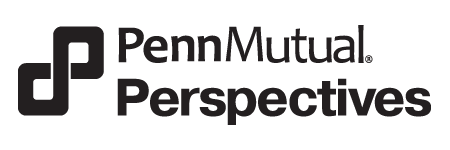Smart Tax Planning for the Soon-to-Be Retired
There’s such an emphasis on saving for retirement, yet no one puts much thought into the tax consequences. Without smart tax planning, taxes can be a major source of erosion on retirement income. Most of us would be thrilled to get a 6 to 8 percent return long-term on our retirement portfolios, yet the current minimum income tax rate is 10 percent, the maximum is 37 percent. The returns in the stock market are far from guaranteed, but the tax rates are written into law. Being smart about taxes can make your money go much farther in retirement.
As an example of potential retirement tax complications, Social Security benefits can be taxable — or tax-free — depending on your other income. If you have taxable income under a certain amount, then your Social Security benefits are tax-free, but if your income goes over that amount by even a single dollar, then 50 to 85 percent of your Social Security benefits become taxable. With a bit of planning, you may be able to keep yourself under that threshold.
This is known as the Social Security cliff, and it is just one of many potential tax problems that can arise in retirement. For those who are soon-to-be retired, here are some steps to consider in planning for taxes in retirement.
Coordinate your investment and tax strategy
Tax planning cannot be done in a vacuum, because, as the Social Security cliff demonstrates, there can be tremendous tax consequences for when and how you recognize income. Coordination is essential. Your financial professional could think that everything is doing really well, not realizing that the investment strategy will cause problems for you and your CPA come tax time. Even if you are a person who likes to do your own taxes, I strongly suggest you seek advice from a tax professional to help set your overall tax strategy as you head into retirement. The rules dealing with retirement income are uncharted territory for you. Work with a professional.
Know your buckets
People tend to have all their retirement savings in a single bucket, typically in a tax deferred plan such as a 401(k), 403(b), or IRA. As a result, they have this very large bucket of money that will always be considered taxable income. Their only other large asset may be their house, which isn’t a liquid asset that can help them with taxes.
What I try to do with my clients is to balance their portfolio into a variety of “buckets.” One bucket should be easily liquid, with after-tax dollars that can be used without incurring a tax penalty. Another bucket should be generating tax-free income. The last bucket is that tax-deferred income from their 401(k), 403(b), or IRA.
The most commonly used buckets for tax-free income are:
- Roth IRAs and Roth 401(k)s. Money is contributed after-tax to these Roth plans, and the withdrawals are therefore income tax-free. There is an income cap to these, but if your income is too high there are “back doors” that allow you to convert regular IRA and 401(k) accounts to the Roth version. Many employers now offer Roth 401(k) and 403(b) plans as an option to employees.
- Preferential bonds. Dividends from bonds issued by state and municipal authorities are largely free from federal income taxes.
- Permanent life insurance. Such policies accumulate cash value that can be accessed income tax-free, if you do it correctly.*
Build for flexibility
Know that whatever strategy you try to follow, your situation will change. It is important to understand how flexibility is built into your investments. Tax planning can get out of control if your vehicles are inflexible. If most of your assets are tied up in your primary residence, and you need the money, then there are a limited number of options for you – sell the house, take a second mortgage, etc. The vehicle is dictating the tax strategy at that point.
Put every decision through the pillow test
I have a client I’ve worked with for 15 years. He makes a lot of his decisions based on “the pillow test.” If he sleeps well at night, predominately, he feels most everything is okay. If he lies awake in bed worrying about something, he spends time fixing it so he can sleep comfortably again. You have to trust the people you are working with to know their area of expertise and make the right recommendations. At the end of the day, if a decision makes you feel better after you’ve done it, then it’s probably a good one, at least for now. You have to re-evaluate your plan periodically to see if it still aligns with your needs.
This post is for informational purposes only and should not be considered as specific financial, legal or tax advice. Depending on your individual circumstances, the strategies discussed in this presentation may not be appropriate for your situation. The information in this material is not intended as tax or legal advice. Always consult your legal or tax professionals for specific information regarding your individual situation.
*All guarantees are based on the claims paying ability of the issuer. Life insurance policies are subject to eligibility requirements and restrictions, and may not be right for everyone. Accessing cash value will reduce the death benefit and policy values, and may be taxable.
3338562RB_Nov22






